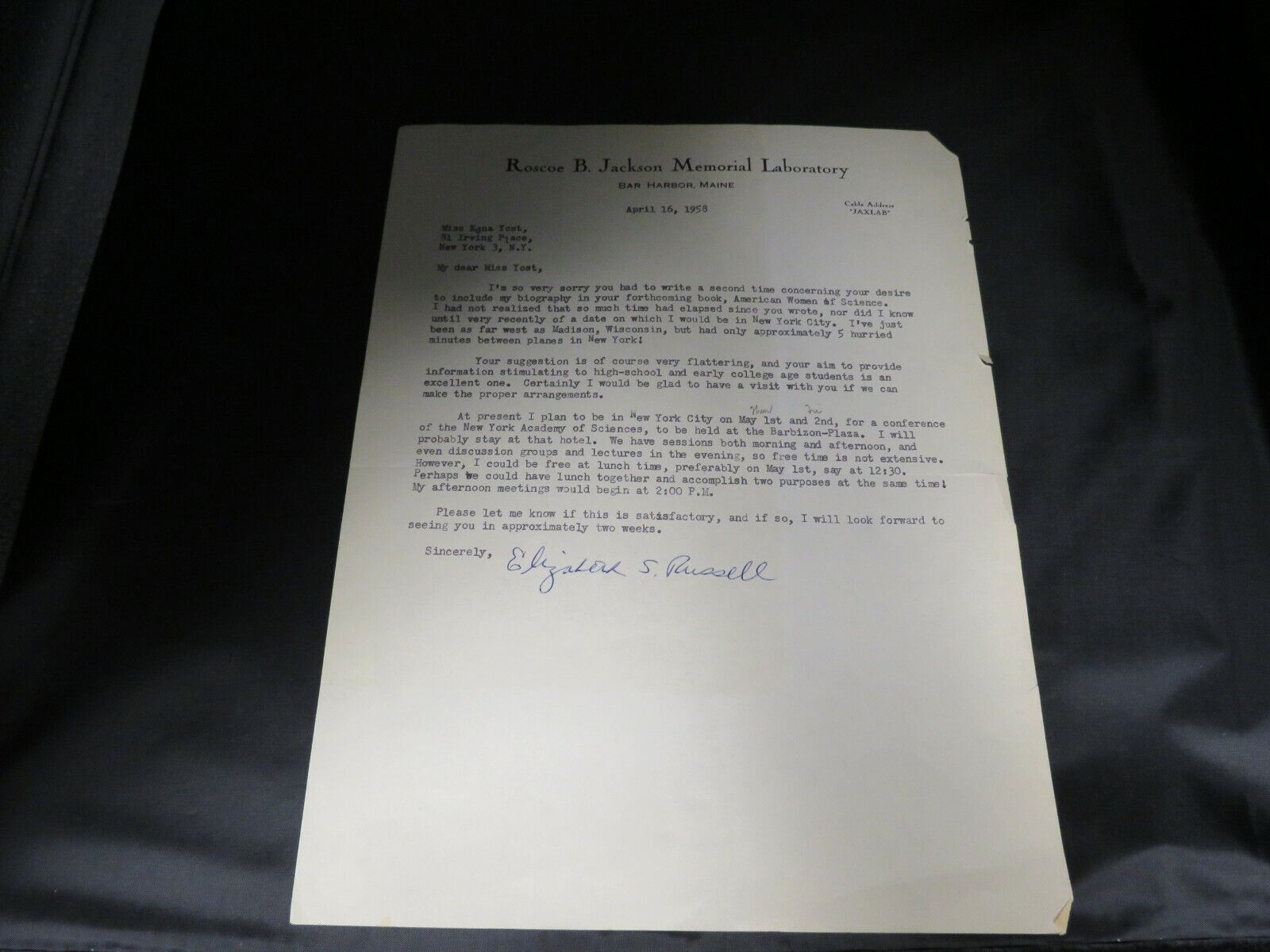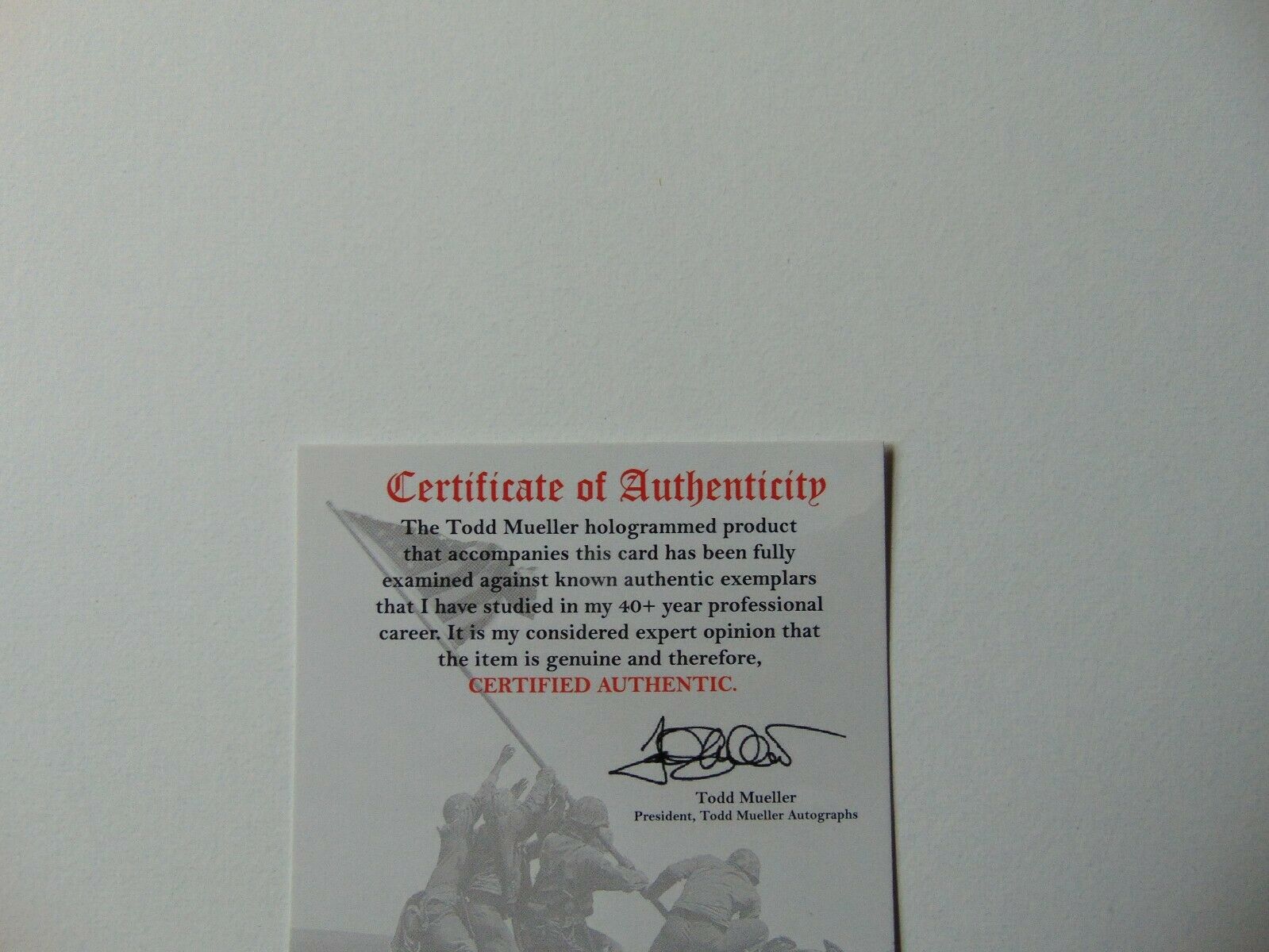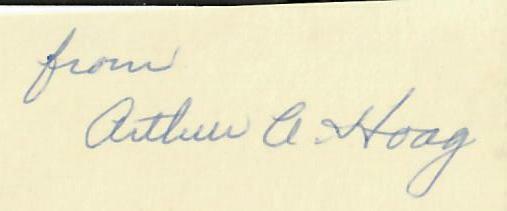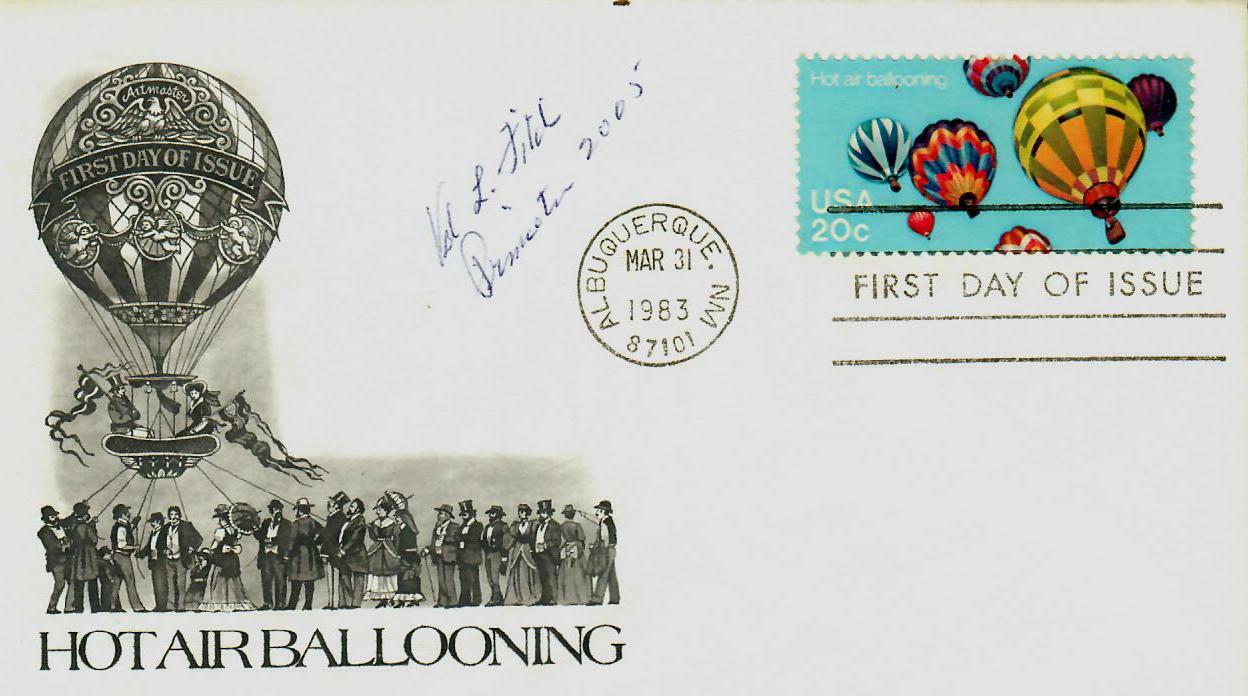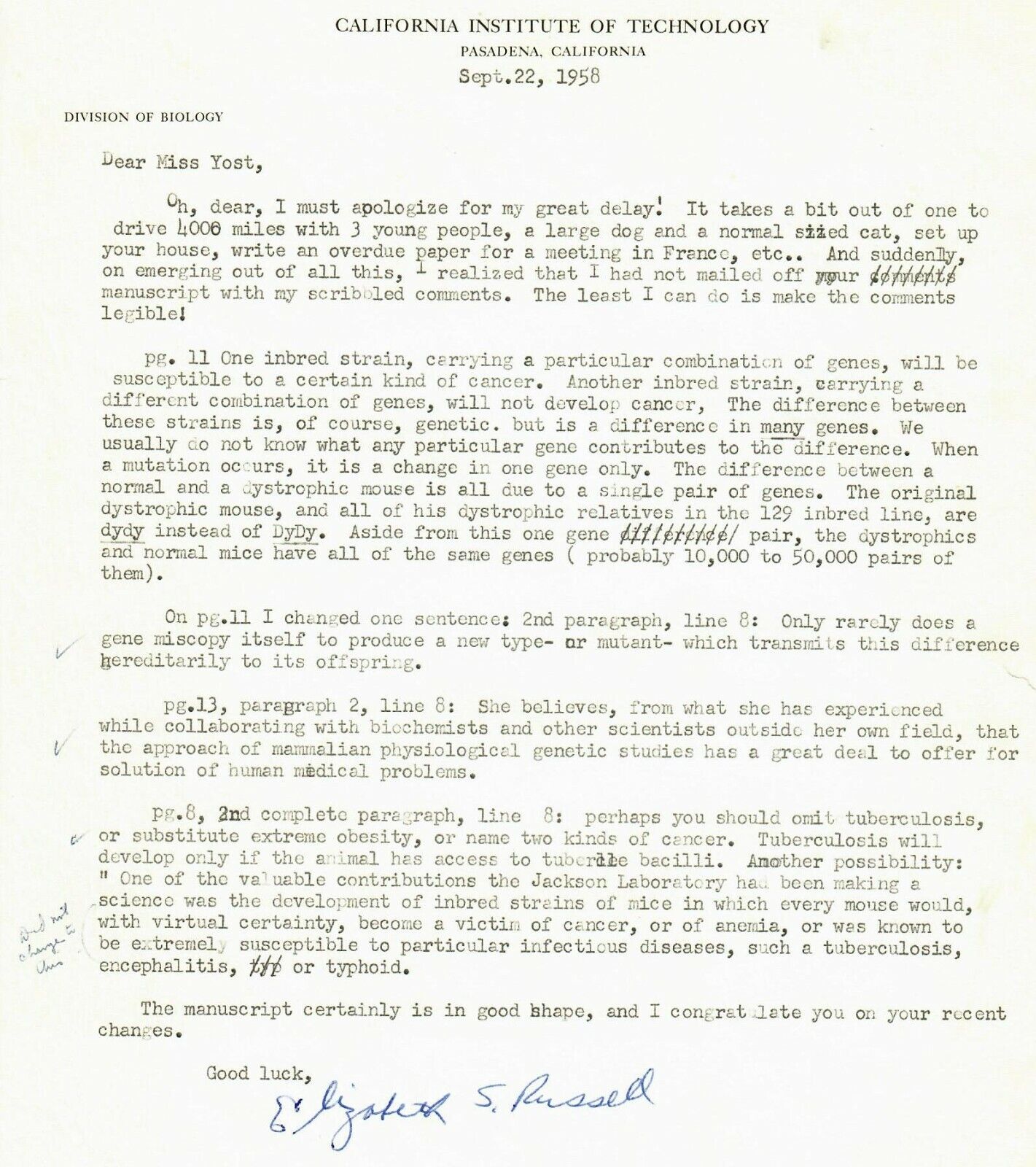-40%
"Mammalian Genetics" Elizabeth S Russell Signed TLS Dated 1958 Todd Mueller COA
$ 105.59
- Description
- Size Guide
Description
Up for auction"Mammalian Genetics" Elizabeth S. Russell Hand Signed TLS Dated 1958.
This item is certified authentic by
Todd Mueller Autographs
and comes with their Certificate of Authenticity.
ES-6442E
Elizabeth Shull Russell
(May 1, 1913 – May 28, 2001), also known as "
Tibby
"
Russell,
was an American biologist in the field of mammalian developmental
genetics
, spending most of her career at the
Jackson Laboratory
in Bar Harbor, Maine. Russell is most recognized for her ground breaking work in
pigmentation
, blood-forming cells, and
germ cells
. She also raised awareness of the benefits of genetically-defined laboratory animals in biomedical research. Russell was born Elizabeth Buckley Shull born in
Ann Arbor, Michigan
. She was the eldest child of Margaret Jeffrey Buckley and Aaron Franklin Shull Ph.D., both of whom were zoologists, and the niece of
George H. Shull
, a prominent geneticist. Elizabeth was fascinated by science and the scientific approach from an early age, leading her to study zoology at the
University of Michigan
, from which she graduated in 1933. After receiving a scholarship from
Columbia University
and completing her master's degree in 1934, she went to work at the
University of Chicago
, obtaining her Ph.D. in zoology in 1937, and marrying fellow student William L. Russell the same year.
The couple moved to work at Jackson Memorial Laboratory, however, her position was unpaid. Russell began studying
tumorogenesis
in fruitflies (
Drosophila melanogaster
). She had two publications and four children between the years 1940 and 1946 (three boys, Richard, John, and James and a girl, Ellen). The nickname
Tibby
came from her husband, because they worked in a laboratory with several other women named Elizabeth. In 1947 Russell's marriage ended in divorce, but she maintained a good relationship with her ex-husband. Later that year the Jackson Memorial Laboratory burnt down, killing the majority of the research animals. Elizabeth was in charge of obtaining new mice from laboratories around the world.
Russell went on to genetically characterize many laboratory animals for
phenotypes
such as physical attributes and disease susceptibilities, completing a monumental
histological
study on the effect that the major coat color mutations of the mouse have on the physical attributes and distribution of pigment granules in the hair. This analysis is the first attempt to define each phenotype of the mouse in terms of genetic factors, setting the stage for virtually all coat-color studies.
